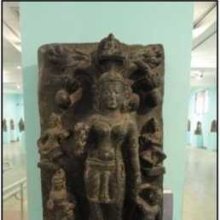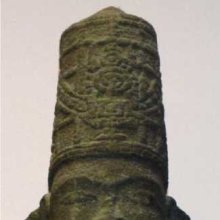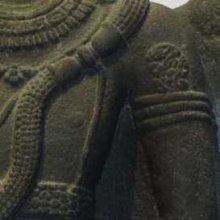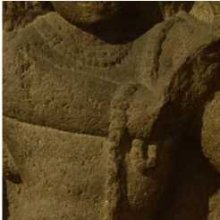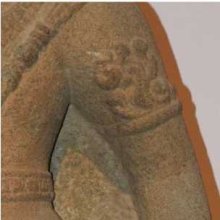New Delhi: 1 definition
Introduction:
New Delhi means something in the history of ancient India. If you want to know the exact meaning, history, etymology or English translation of this term then check out the descriptions on this page. Add your comment or reference to a book if you want to contribute to this summary article.
Images (photo gallery)
(+18 more images available)
India history and geography
Source: What is India: Annual Report on Indian Epigraphy (1945-1952)New Delhi is an archaeologically important site situated in Delhi district, known for inscriptions regarding the ancient history of India. For example, at New Delhi there is a Sanskrit inscription on broken bricks in characters of about the 3rd century A. D. which belongs to king Amoghavarṣa.

The history of India traces the identification of countries, villages, towns and other regions of India, as well as mythology, zoology, royal dynasties, rulers, tribes, local festivities and traditions and regional languages. Ancient India enjoyed religious freedom and encourages the path of Dharma, a concept common to Buddhism, Hinduism, and Jainism.
See also (Relevant definitions)
Partial matches: Delhi.
Full-text: Hastinapura, Kurukshetra, Tugulakabada, Hastin, Crotalaria tetragona, Veronica agrestis, Alysicarpus bupleurifolius, Lathyrus aphaca, Polygonum barbatum, Aeschynomene indica, Lathyrus sativus, Argemone mexicana, Desmodium gangeticum, Stellaria media, Achyranthes aspera, Oxalis corniculata, Ricinus communis.
Relevant text
Search found 74 books and stories containing New Delhi; (plurals include: New Delhis). You can also click to the full overview containing English textual excerpts. Below are direct links for the most relevant articles:
Settlement in Early Historic Ganga Plain (by Chirantani Das)
Part 1 - Urban model of Rājagṛha < [Chapter II - Origin and Function of Rājagṛha as the seat of Monarchy]
Part 9 - Archaeological urban features of Vārāṇasī < [Chapter VI - Vārāṇasī: Emergence of the Urban Centre and Seat of Administration]
Dipavamsa (study) (by Sibani Barman)
Social philosophy of Swami Vivekananda (by Baruah Debajit)
Amaravati Art in the Context of Andhra Archaeology (by Sreyashi Ray chowdhuri)
Chapter 1 - Scope, Sources and Methodology
Dhānyakaṭaka and other names of Amarāvatī < [Chapter 4 - Survival of Amarāvatī in the Context of Andhra Art]
Sannati And Kanaganahalli < [Chapter 5 - Impact of Amarāvatī Art]
The backdrop of the Srikanthacarita and the Mankhakosa (by Dhrubajit Sarma)
International Affairs: A Survey < [April 1970]
Who’s Who Among Our Contributors < [January – March, 2000]
The Lotus Temple in New Delhi < [July – September, 1999]
Related products
(+9 more products available)
